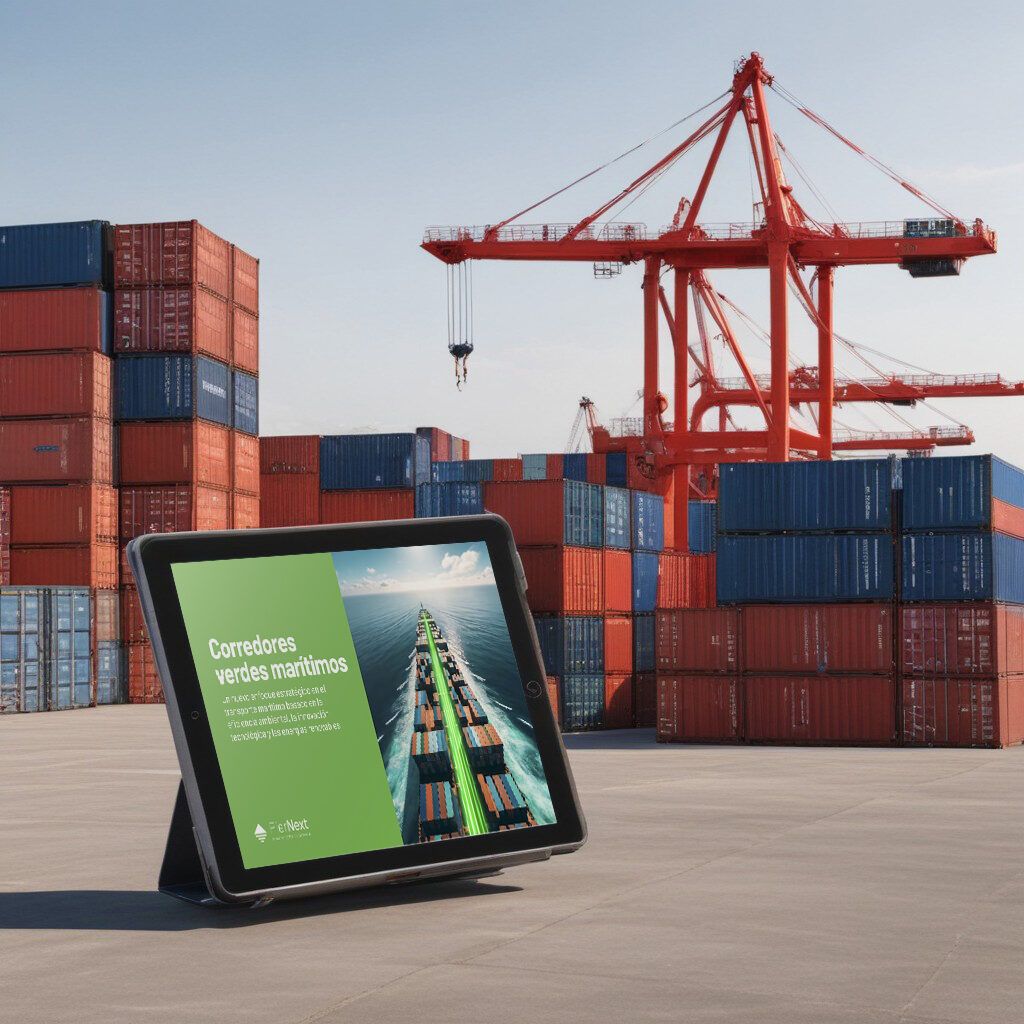Promoting sustainable practices and reducing the environmental impact of existing shipping routes
Green shipping corridors are a series of tools created in response to the urgency of moving towards the goal of achieving decarbonization targets, through collaboration between the various stakeholders in the sector.
"The green corridor concept responds to the need to bring together a whole series of agents in the logistics chain linked to maritime transport, i.e. ports, shipping companies, fuel producers and cargo owners to decarbonize a maritime route between two ports," summarizes Javier Garrido, technical innovation manager at the Port of Barcelona.
Prepared by students of the UPC Master “Executive Supply Chain Management" (Yeritza Jessie Martínez, Marcelo Luttges Caniggia, Àngel Milla Bret, Isidro Pacheco Rincón, Àlvar de la Mano Andrés and Daniela Canales), this ebook concisely presents strategies, policies and examples that contribute to reducing greenhouse gas emissions in the maritime sector.
The first section of the publication places the reader in the context in which maritime corridors emerge, their objectives (preserving marine biodiversity or optimizing routes and logistical efficiency), as well as the components that are part of them (the introduction of green transport labels or eco-efficient infrastructure).

Trans-oceanic examples of shipping green corridors
The second and last section analyzes six real cases of green corridors and port collaborations. Garrido points out that the creation of these routes is usually based on those that register "a large volume of high value-added cargo, that have the collaboration of ports, shipping lines and cargo owners" and whose ports have "the capacity to produce green fuel, destined not only for maritime transport, but also for the industry around the port or for land transport itself".
The Port of Halifax and the Port of Hamburg, for example, is based on promoting green energy in the corridor or aligning regulatory measures, financial incentives and safety standards.
Another collaboration, which in this case started in 2013 with several agreements related to sustainability, is from the ports of Antwerp and Montreal. Their green corridor focuses, among others, on contracting zero-emission shipping services or investing in green fuel supply infrastructure.
In total, the number of green corridor initiatives has doubled globally from 21 to 44 by 2023.
Garrido explains that green shipping corridors will also be the protagonists of the next Smart Ports: Piers of the Future, to be held in November, which will incorporate into its agenda the Green Ports Forum, a working group of port cities around the world, which will include green corridors among the topics to be discussed. The C40 Green Shipping Corridor Leader Summit will also be held during this event. The ebook itself discusses an example of a corridor coordinated by the C40 forum, the one running between the ports of Los Angeles and Shanghai.
Finally, the technical innovation manager of the Port of Barcelona says that the team of authors of this ebook is compiling information to publish a second ebook in the future that will give continuity to the green corridors. This time, focused on the part of sustainable land transport, which expands the "port to port" concept to "door to door".







